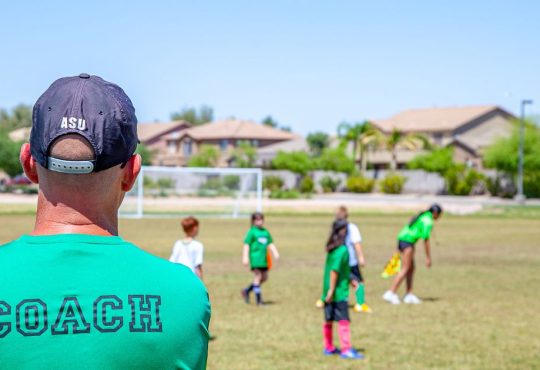Football, a game that has captured the hearts of millions worldwide, is no longer just a man’s game. The tide is turning, and women are taking center stage in this exhilarating sport. With increased visibility, support, and opportunities, women’s football is growing faster than ever before. This shift is not just changing the game but is also empowering women to break barriers and redefine their roles in sports. From grassroots initiatives to professional leagues, the journey of women in football is inspiring and trailblazing.
As more women lace up their boots and step onto the pitch, they are not only honing their skills but also challenging societal norms. The rise of women’s football is a testament to the power of persistence, passion, and teamwork. In this article, we’ll explore how women are making their mark in football, the trends shaping the sport, and the incredible stories of those who dared to dream big. Join us as we dive into the world of football trends as women’s sports and celebrate the remarkable strides being made.
The Early Days: Breaking into Football
Historical Barriers
Historically, women faced significant obstacles in playing football. Social norms and institutional restrictions often kept women off the pitch. In some countries, women’s football was outright banned or dismissed as a trivial pursuit. However, pioneers in the early 20th century began to challenge these conventions. Notably, the Dick, Kerr Ladies F.C., founded in 1917 in England, became one of the first women’s football teams to gain recognition. Despite societal resistance, they played to packed stadiums and laid the groundwork for future generations.
Rise of Women’s Leagues
The 1970s and 1980s marked a pivotal period as more countries began forming women’s leagues. The establishment of the Women’s Football Association in England in 1969 and subsequent leagues in other nations signaled a shift towards organized women’s football. These leagues provided a platform for women to showcase their talents and compete at higher levels. Despite limited funding and media coverage, the dedication of female athletes and supporters ensured the sport’s steady growth.
Training and Skill Development: The Evolution
Grassroots Programs
One of the most significant trends in women’s football is the rise of grassroots programs. These initiatives aim to introduce young girls to football, nurturing their interest and skills from an early age. Programs like the FA’s “Weetabix Wildcats” in the UK and “Soccer Sisters” in the US focus on creating a fun, inclusive environment where girls can learn the basics of the game. These programs are crucial for building a strong foundation and encouraging long-term participation in the sport.
Professional Training and Facilities
As women’s football gains popularity, there has been a marked improvement in the quality of training and facilities available to female athletes. Professional clubs and national teams now invest significantly in state-of-the-art training centers, coaching staff, and sports science support. This professionalization has led to noticeable improvements in the athleticism, tactical awareness, and technical skills of female footballers. Players like Megan Rapinoe, Lucy Bronze, and Sam Kerr are prime examples of the elite talent emerging from this environment.
Key Trends Shaping Women’s Football
Increased Media Coverage
Media coverage of women’s football has seen a dramatic increase in recent years. Major broadcasters now regularly televise women’s matches, including domestic leagues, international tournaments, and the FIFA Women’s World Cup. This visibility has helped to raise the profile of the sport and inspire young girls to take up football. Social media has also played a vital role, allowing players to connect with fans and share their journeys, further boosting the sport’s popularity.
Sponsorship and Commercial Investment
The growth of women’s football has attracted significant commercial interest. Major brands and corporations are now investing in women’s teams, tournaments, and individual players. Sponsorship deals provide much-needed financial support, enabling clubs to offer better salaries, facilities, and development programs. The increased financial backing is crucial for the sustainability and further growth of women’s football.
International Competitions
The FIFA Women’s World Cup and the UEFA Women’s Champions League have become marquee events in the football calendar. These tournaments showcase the highest level of competition and provide a platform for players to perform on a global stage. The success of these competitions has led to record-breaking attendance and viewership, demonstrating the growing appetite for women’s football.
Empowering Women Through Football
Role Models and Inspirations
One of the most powerful impacts of the rise of women’s football is the emergence of role models. Female footballers are now household names, inspiring the next generation of players. Role models like Marta Vieira da Silva, Abby Wambach, and Ada Hegerberg have shown that with dedication and passion, women can achieve greatness in football. Their stories motivate young girls to pursue their dreams and break through any barriers they may face.
Social Impact and Community Engagement
Women’s football has also made significant strides in social impact and community engagement. Many female footballers use their platforms to advocate for gender equality, social justice, and other important causes. Football clubs and organizations are increasingly involved in community outreach programs that promote inclusivity and provide opportunities for girls from diverse backgrounds to participate in the sport.
Overcoming Challenges: The Road Ahead
Pay Disparity
Despite the progress, pay disparity remains a significant issue in women’s football. Female players often earn a fraction of what their male counterparts make, even at the highest levels. Efforts to address this imbalance are ongoing, with players, unions, and advocates pushing for equal pay and better working conditions. The landmark equal pay lawsuit filed by the US Women’s National Team is a notable example of this struggle for equity.
Cultural and Structural Barriers
Cultural attitudes and structural barriers still pose challenges to the growth of women’s football in many parts of the world. In some regions, societal norms and limited access to sports facilities hinder girls’ participation in football. Addressing these barriers requires concerted efforts from governments, sports organizations, and communities to create a more inclusive environment for women in sports.
Success Stories: Inspiring Journeys in Women’s Football
Megan Rapinoe: A Champion on and off the Field
Megan Rapinoe’s journey in football is nothing short of inspiring. A key player for the US Women’s National Team, Rapinoe has won multiple World Cups and Olympic medals. Off the field, she is a vocal advocate for gender equality and LGBTQ+ rights. Her leadership and activism have made her a powerful figure in the fight for equal pay and social justice in sports.
Marta Vieira da Silva: The Queen of Football
Marta Vieira da Silva, commonly known as Marta, is often regarded as one of the greatest female footballers of all time. Hailing from Brazil, Marta has won the FIFA World Player of the Year award six times. Her incredible skill, determination, and passion for the game have inspired countless young girls to pursue football. Marta’s legacy extends beyond her on-field achievements, as she continues to advocate for the development of women’s football globally.
The Future of Women’s Football
The rise of women in football is a testament to the transformative power of the sport. As women continue to break barriers and push boundaries, the future of football trends as women’s sports looks bright. Increased investment, media coverage, and grassroots programs are paving the way for a new generation of female footballers. The stories of trailblazers and role models remind us that with passion and perseverance, anything is possible.
However, the journey is far from over. Addressing challenges such as pay disparity and cultural barriers is crucial for sustaining the momentum and ensuring that women’s football continues to thrive. By supporting female athletes, celebrating their achievements, and advocating for equality, we can help create a world where football truly is for everyone.





